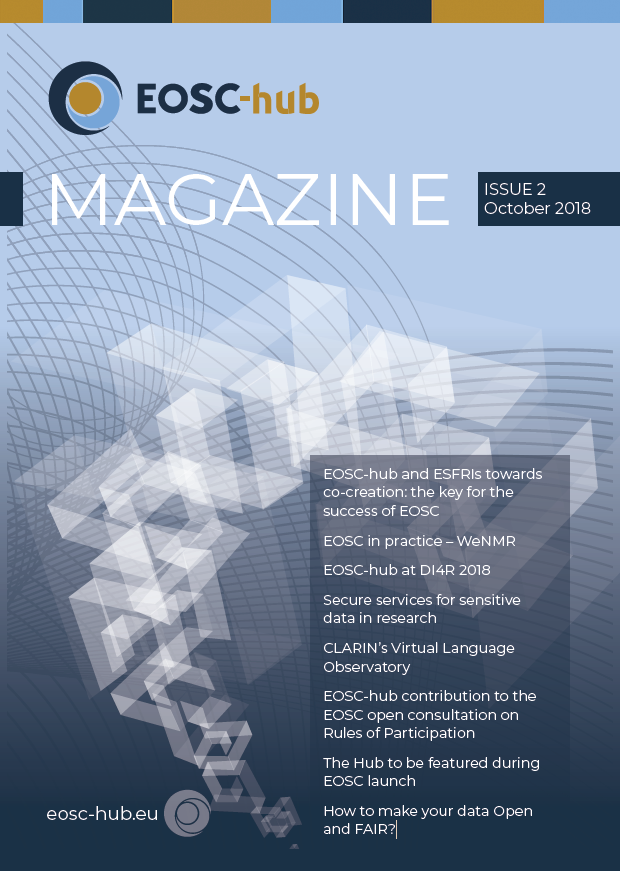The second edition of the EOSC-Hub magazine features an interview with Alexandre Bonvin explaining how WeNMR builds on EOSC-Hub resources to serve a worlwide community of researchers in structural biology and life sciences. WeNMR is operating as a thematic service provider in EOSC-Hub.
The WeNMR portals cover different area of structural biology such as NMR structure calculations and data analysis (e.g. the AMBER, Xplor-NIH and FANTEN portals), the fitting of structural models into cryo-EM maps (PowerFit), the analysis of mass spectrometry cross-links (DisVis) or the integrative modelling of biomolecular complexes (HADDOCK). The tools are powered by High-Throughput Compute capabilities provided by the EGI Federation and enhanced with software components developed by the INDIGO DataCloud project.
In this interview, Alexandre Bonvin gives answer to the following questions:
- What are the main research goals of the WeNMR community?
- How many people are involved in WeNMR?
- What are the services that WeNMR provides, or wants to provide, to this collaboration?
- What are the computational challenges?
- The EOSC is being set up to be Europe’s virtual environment for all researchers to store, manage, analyse and re-use data for research, innovation and educational purposes. How will you interact with this environment?
- How do you imagine your field in ten years?

EOSC-hub is an European Union’s Horizon 2020 project that brings together multiple service providers to create the Hub: a single contact point for European researchers and innovators to discover, access, use and reuse a broad spectrum of resources for advanced data-driven research. For researchers, this means a broader access to services supporting their scientific discovery and collaboration across disciplinary and geographical boundaries.
